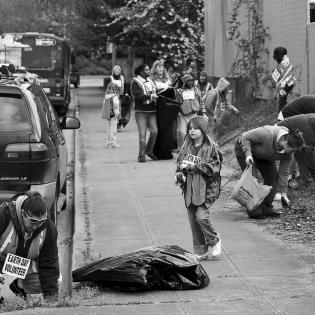Taking Care of Nature (Private-Religious)
This lesson will help students learn the value of taking care of the world. It will help them form a connection with nature and want to protect the things that G-d created.
The learner will:
- manipulate creation cutouts to show that G-d created the world step-by-step.
- state that G-d placed people in charge of caring for nature.
- give examples of ways people can take care of the environment.
- grow plants and take care of them.
- Creation Cutouts – i.e. cutouts of a sky, land, oceans, and other creations, as noted in Bible. Put tape, hook and loop fasteners, felt, or magnets on the backs of the cutouts to attach to the board you have available for display.
- Permanentmarkers
- Lima beans
- Paper towels
- Re-sealable plastic bags
- Recycled containers (yogurt cups) and soil
- Story-sentence paper (i.e. paper with lines and space to draw a picture)
- Read aloud book The Tiny Seed by Eric Carle
Each student should look at home for a plastic container that is considered trash (such as a yogurt container) and bring it to school for planting the bean seed.
- Bible: Genesis 1, and Genesis 2:1-15.
- Navigating The Bible II Web Site:
https://bible.ort.org/books/pentd2.asp?ACTION=displaypage&BOOK=1&CHAPTER=2 - Carle, Eric. The Tiny Seed. Aladdin, 2001. ISBN: 0689842449
Instructions
Anticipatory Set:Show the students the “creation cutouts” of sky, land, ocean, trees, animals, and people. Ask students to recall the story from the Bible when G-d creates these parts of the world as they put the cutouts on the board in the order of the story. After several children have had an opportunity to tell the story with the cutouts, summarize that all of these objects have been given to us to enrich our environment and it is our responsibility to care for them.
Tell the students that G-d carefully created the world and also created the Garden of Eden. Describe the Garden of Eden: It had pretty trees with tasty fruit, and a river. When G-d created people, He placed them in the Garden of Eden, and put them in charge of the land, to take care of it.
Read the verse: And God took man, and put him in the Garden of Eden, to work it and to watch over it.” Genesis 2:15. Write the verse on the board.
Ask students to hypothesize about what Adam might have done to take care of the land.
Tell the students that, like Adam, we also have the responsibility to take care of the land we live on. Ask them to brainstorm ways to care for the environment. Write their answers on the board (don’t pollute the air, don’t litter, don’t harm animal habitats, cut the grass, limit your use of paper goods, recycle, etc.).
Lead a discussion about what happens if we don’t take care of the world.
Tell the class they will be growing their own plants, which they will take care of themselves.
Hand out to each student the lima beans, a wet paper towel, and a re-sealable plastic bag. The students write their names on the bags withpermanent markers. They put their beans inside the wet paper towel and put the paper towel in the plastic bag. Explain that the beans will get soft and then sprout. When they sprout, the students will plant them in soil.
Read aloud The Tiny Seed by Eric Carle. Discuss the “miracle” that seeds survive the harsh conditions of the world to grow into plants.
Follow -up Activity: Have the students write or dictate a sentence about why it is important to grow and care for plants. Provide final draft paper with lines and room for an illustration. Students should read their sentence to the class. (As an alternative, they may plan and act out a skit about the importance of caring for plants.)
Assessment will be based upon the students’ participation in class—their questions, comments, and what they contribute to the follow-up activity.
Philanthropy Framework
-
Strand PHIL.I Definitions of Philanthropy
-
Standard DP 01. Define Philanthropy
-
Benchmark E.3 Recognize that citizens have a responsibility for the common good as defined by democratic principles.
-
-
-
Strand PHIL.II Philanthropy and Civil Society
-
Standard PCS 03. Philanthropy and Economics
-
Benchmark E.13 Describe limited resources and scarcity.
-
Benchmark E.5 Recognize the wise use of resources as <i>stewardship</i>.
-
-
-
Strand PHIL.III Philanthropy and the Individual
-
Standard PI 01. Reasons for Individual Philanthropy
-
Benchmark E.3 Define stewardship and give examples.
-
-
